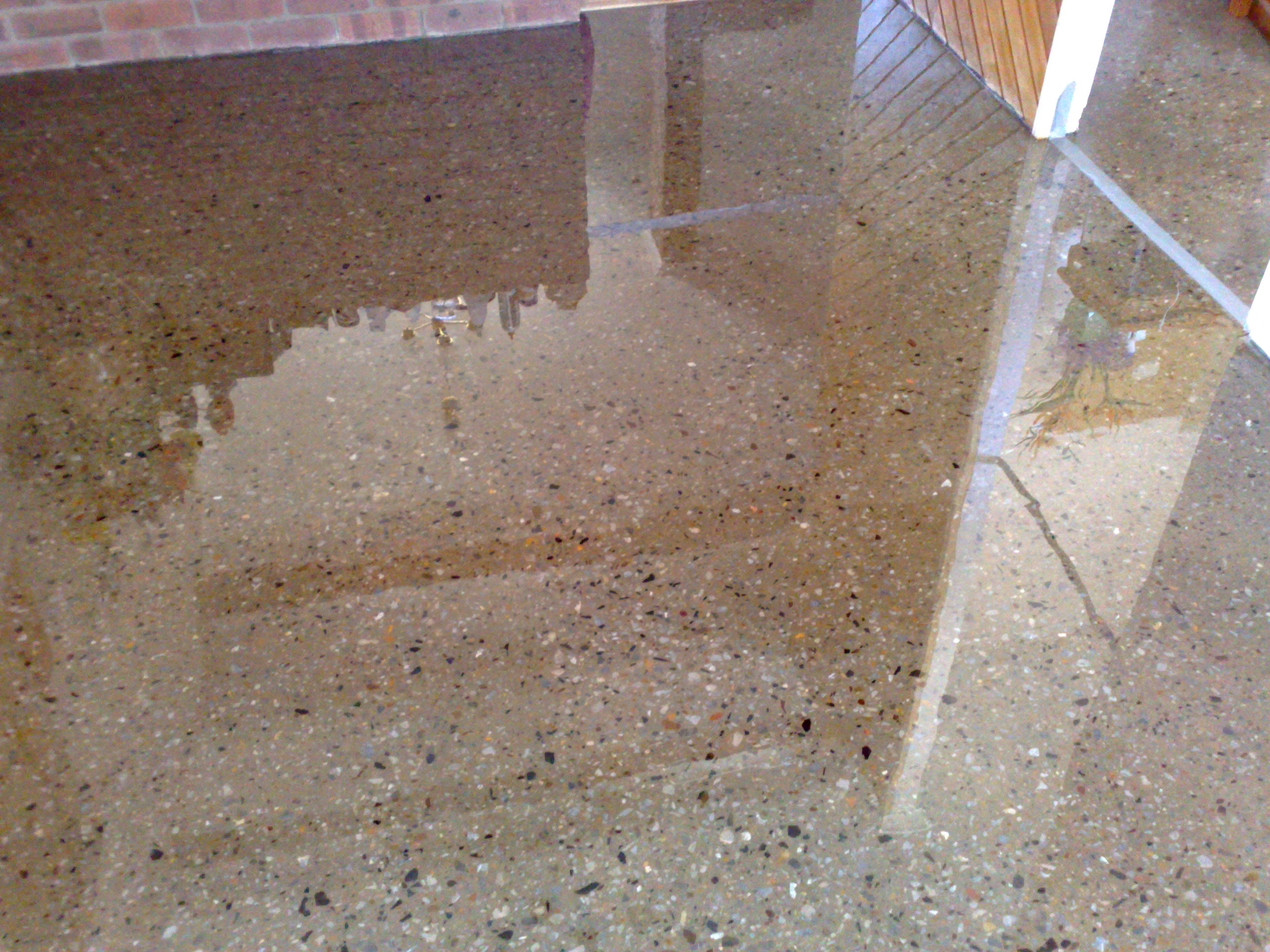Polished concrete vs polished concrete look
What is polished concrete?
Traditional polished concrete involves running up to 12 passes of a grinding
 machine over a concrete slab and the application of a “densifying” solution to achieve the characteristic hard, glossy surface.
The process can take many days and remove several millimetres of concrete before the desired finish is reached.
machine over a concrete slab and the application of a “densifying” solution to achieve the characteristic hard, glossy surface.
The process can take many days and remove several millimetres of concrete before the desired finish is reached.
The “polished concrete look”, “warehouse look” or “grind and seal” finish, as it can be known, uses a
grinding machine to expose the concrete aggregate once again, however this time a clear epoxy resin is applied instead to create the
smooth, glossy finish.
What are our top polished concrete tips?
-
Not every slab can be polished - The biggest mistake people make with traditional polished concrete is assuming every
concrete slab can be polished to the same standard. Unfortunately there are a number of stumbling blocks that can make a concrete slab
unsuitable for polishing.
For instance, some will be too soft and won’t respond well to the grinding process; others may not be entirely level, with high and
low spots that can show through as patchy and inconsistent. The same can be said if the concrete has poor, uneven or just plain ugly
aggregate mixed throughout. Also, cracks and previous repairs will be visible, which might seem obvious but is very easy to overlook.
Finally, because polished concrete removes a significant amount of concrete in the polishing process, it can be seen as a structural threat
in multi-story buildings and therefore not always permitted.
-
Maintenance - When done properly traditional polished concrete can be extremely resilient, however the popular notions of
it being a maintenance-free floor aren’t quite correct. The reality is all floors will need to be maintained properly. Good
practices like regular cleaning and inspection, careful movement of heavy items, use of mats at entrances and suitable traffic demands are
simply not negotiable. If a high-gloss finish is to be preserved, extra treatment will be required down the track to refresh and rejuvenate.
It’s worth noting that the densifiers used for hardening polished concrete typically don’t seal like a coating would. For
instance, spilled red wine left overnight can result in a permanent stain rather than remain a cleanable puddle. Also, some sealers can be
extremely difficult to bond to and, in combination with the hard, slick finish, can curb plans for a new floor in the future.
-
Cost - Compared to the resin-based polished concrete look, traditional polished concrete will cost about twice as much per
square metre on average and required extra removal costs at the end, but it’s only one of the factors you need to weigh up when
choosing which way to go.
Which polished concrete to use?
With traditional polished concrete, it’s very hard to determine beforehand whether the slab is suitable to grind, how much concrete
will need to be removed and how readily it will take on sheen. It will also take longer and the gloss levels probably won’t be as
predictable as the resin alternative (depending on the resin used).
On the other hand, if it all goes to plan, it will provide a lower maintenance surface that’s more resistant to scratching, scuffing
and yellowing. You need to ask yourself - do I go the cheaper, perhaps more controllable resin option and put up with more
maintenance,
or, do I invest more and hope my concrete slab responds well?
You can find more hints and tips for floor owners, builders, designers, architects and installers, as well as FAQs, on our
polished concrete page - Can polished concrete flooring be done with clear epoxies?
Take care and keep smiling,
Jack Josephsen
 machine over a concrete slab and the application of a “densifying” solution to achieve the characteristic hard, glossy surface.
The process can take many days and remove several millimetres of concrete before the desired finish is reached.
machine over a concrete slab and the application of a “densifying” solution to achieve the characteristic hard, glossy surface.
The process can take many days and remove several millimetres of concrete before the desired finish is reached.